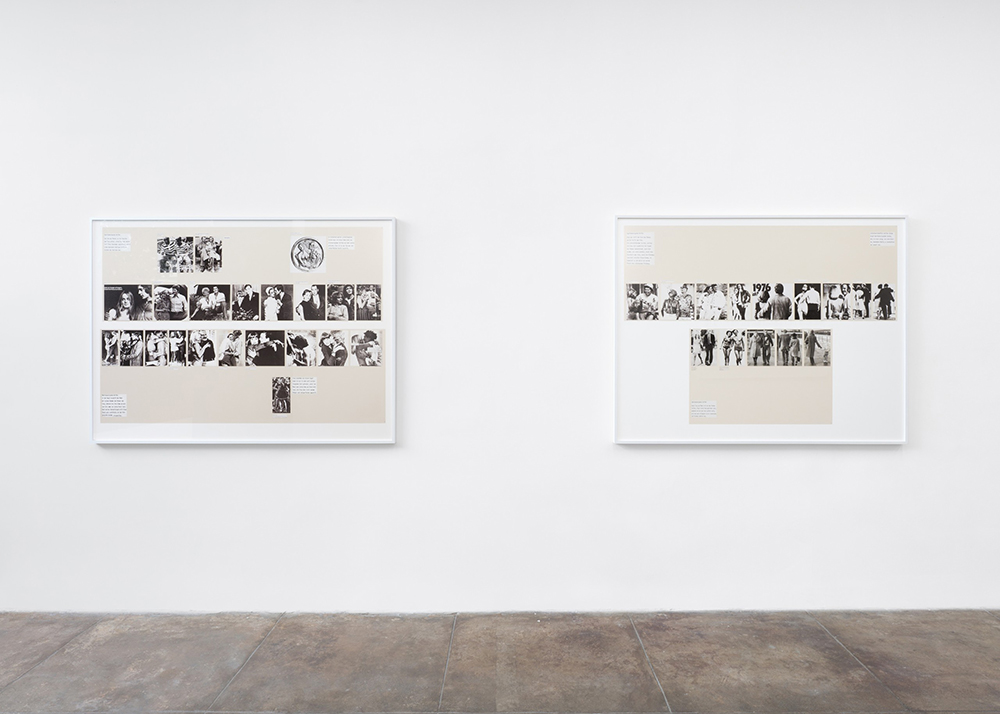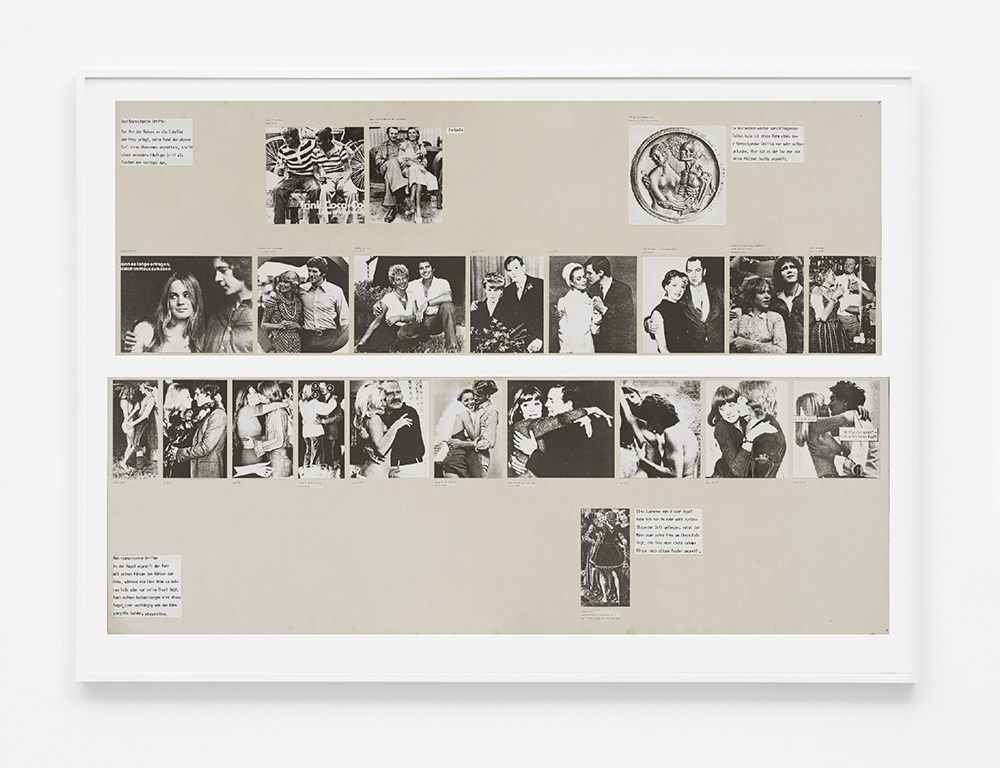Long before it was called out as a public nuisance, the phenomenon of manspreading was exhaustively, perhaps definitively, documented by the German feminist artist Marianne Wex (1937–2020) in a wide-ranging collection of images titled “Let’s Take Back Our Space” (1977). Fascinated by body language, Wex took photographs of people on the streets of her native Hamburg in the early 1970s while also collecting images from commercial advertising, art books, pornography and photojournalism. Amassing an enormous archive of thousands of images, Wex first produced an artist’s book to help her process her findings. Then, she organized the images into a series of more than 200 groupings that focused on various themes, with each grouping pasted onto a large panel with occasional captions. In 2018, she worked with gallerist Tanya Leighton to select 18 of those panels to reproduce as editions of five.
The eight panels on view here presented a precise comparative taxonomy of several forms of manspreading as well as other manifestations of gender difference, through imagery ranging across cultures, social strata, geographical location and centuries. Wex’s sprawling work brings into sharp focus one of the essential edicts of gender difference: Men are taught to take up as much space as possible while women are taught the opposite.
Let’s Take Back Our Space: ‘Female’ and ‘Male’ Body Language as a Result of Patriarchal Structures (Standing Legs) (all works 1977/2018) features 16 men from different walks of life—businessmen, policemen, soldiers, entertainers—all standing with legs planted firmly and far apart, arms crossed or jammed into pockets, in postures that are unmistakably aggressive. Beneath them are eight women of various ages and body types, all standing with their legs held daintily close together and their heads lowered modestly. Besides the marked difference in how each group took up space, I was also struck by how the men’s clothes signified their position in the world whereas the women’s nondescript outfits seemed to point to their lack thereof during a time when the primary occupation available to them was still that of housewife.

Marianne Wex, Let’s Take Back Our Space installation view, 2024. Courtesy of Tanya Leighton.
The image clusters included some variations, and these often had a cheeky and/or queering effect. Standing Legs features one of a naked man, probably taken from gay porn, upright in a classically feminine way with hips tilted and legs close together. Let’s Take Back Our Space: ‘Female’ and ‘Male’ Body Language as a Result of Patriarchal Structures (Possessive Holds) focuses on the positions assumed by male-female couples when they embrace; the man always has his arm draped possessively over the woman, while the woman always clings to the man as she looks up at him passively. In the top right corner of this panel is an image of an ancient coin bearing the classic “death and the maiden” motif, blending in seamlessly with the other images on the board.
“Let’s Take Back Our Space” is Wex’s only surviving artwork; soon after making it, a critical illness forced her to pivot her life in another direction. A massive and revelatory achievement comprising a treasure trove of sharply observed images, this body of work remains as rich and relevant today as it was when it was created nearly 50 years ago.


